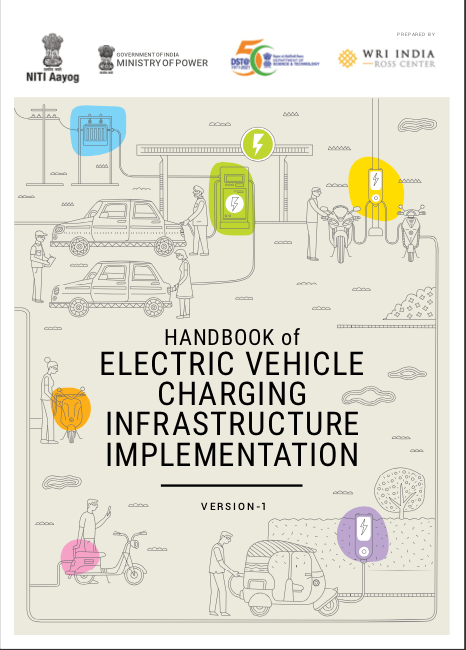Niti Aayog releases handbook to Guide EV Charging infrastructure in India
On Thursday, NITI Aayog released a handbook to guide EV Charging infrastructure in India. The Handbook offers a systematic approach that guides implementing authorities and stakeholders on planning, authorization, and execution of EV charging infrastructure in India.
According to an official statement, the objective is to enhance charging infrastructure and facilitate a rapid transition to electric mobility in the country.
The Handbook for Electric Vehicle Charging Infrastructure Implementation has been jointly developed by NITI Aayog, Ministry of Power (MoP), Department of Science and Technology (DST), Bureau of Energy Efficiency (BEE), and World Resources Institute (WRI) India.
The transition to electric mobility is a promising global strategy for decarbonizing the transport sector. India
is among a handful of countries that support the global EV30@30 campaign, which targets to have at least 30% new vehicle sales be electric by 2030.
“The EV ecosystem in India is evolving rapidly and there are several players entering the charging infrastructure market. This handbook provides holistic governance for public and private stakeholders to work together in establishing robust and accessible EV charging networks,”
Mr Amitabh Kant, CEO, NITI Aayog
The handbook provides an overview of the EV Charging infrastructure in India and identifies the multi-stakeholder governance model for EV Charging. The handbook also includes chapters on how to access charging demand and set targets, along with providing basic principles of location planning for public EV charging.
Further, the handbook elaborates on how regulatory framework for EV charging connections & role of DISCOMs in providing power connections, to achieve effective EV-Grid integration.
“The Ministry of Power and it’s Central Nodal Agency for the establishment of Charging Infrastructure for EVs in India i.e. the Bureau of Energy Efficiency (BEE), are working closely with DISCOMs and State agencies in overcoming barriers to charging infrastructure implementation, for which this handbook will be greatly helpful. With the rapidly growing share of renewables in the energy mix in the country, the benefits from transition towards e-mobility are only expected to become more significant in the coming years,”
Mr Alok Kumar, Secretary, Ministry of Power.
Lastly, the handbook deals with various models of EV-Charging implementation.



